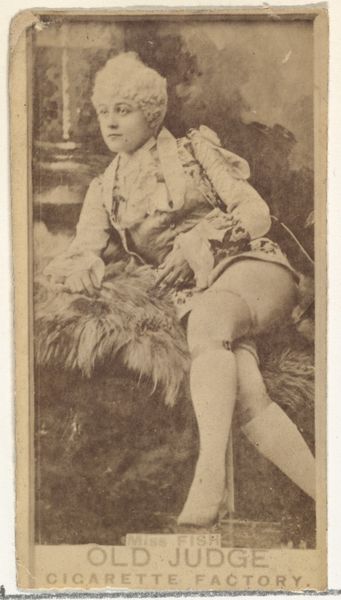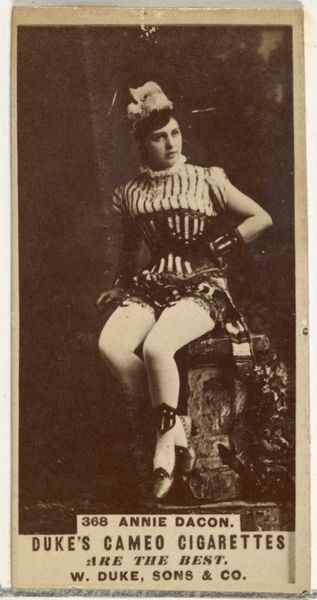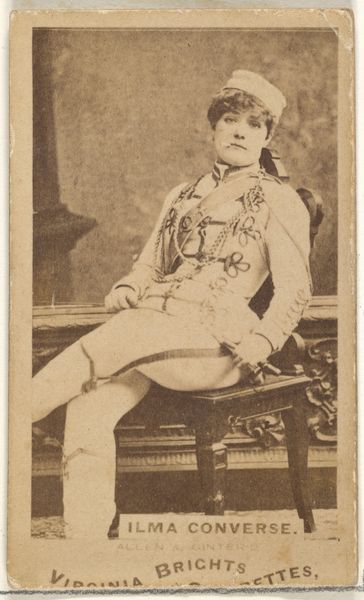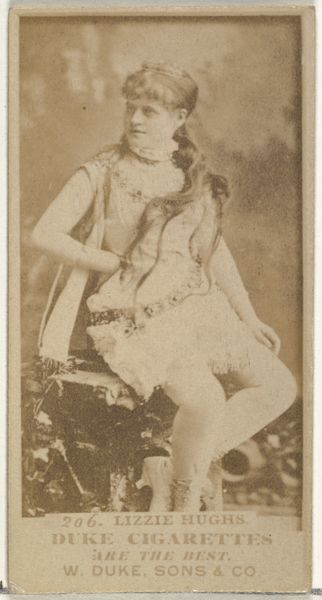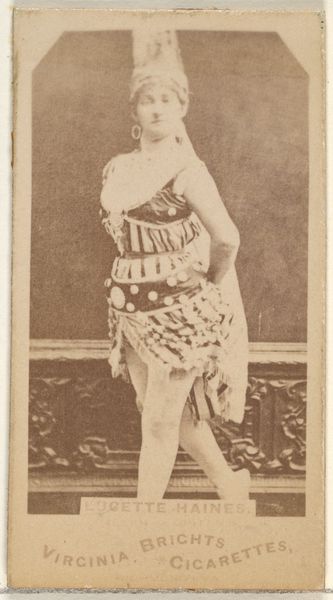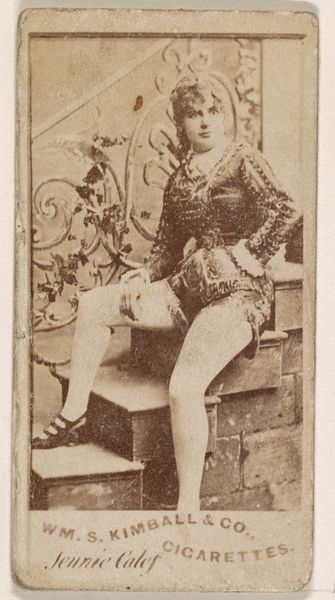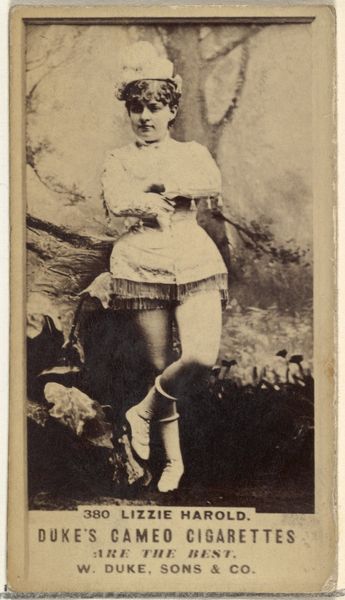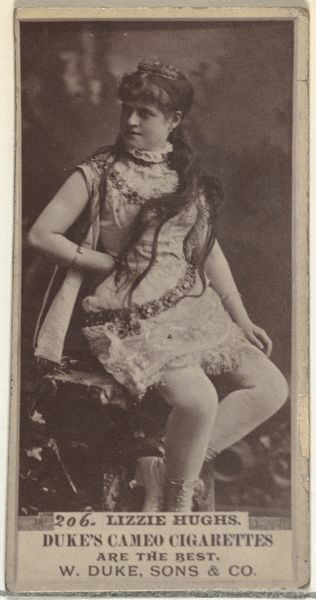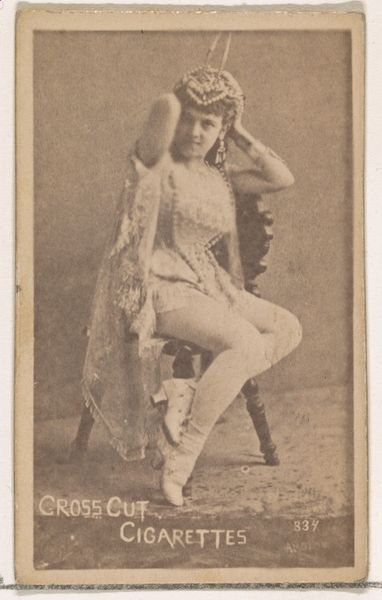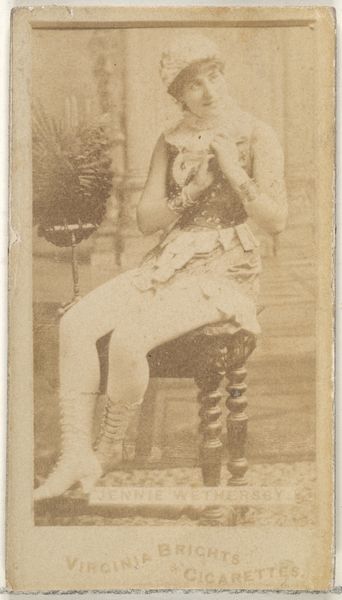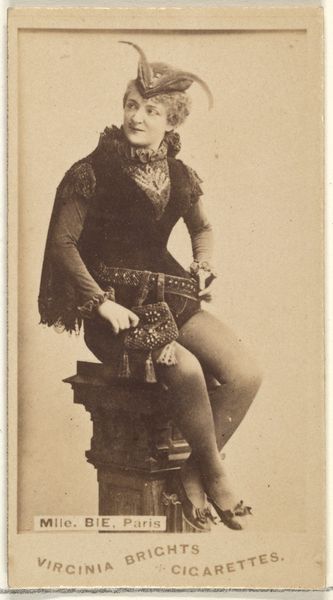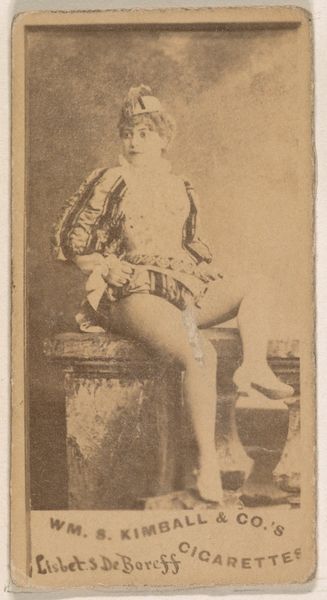
Jenny Lee, from the Actresses series (N203) issued by Wm. S. Kimball & Co. 1889
0:00
0:00
drawing, print, photography
#
portrait
#
drawing
# print
#
old engraving style
#
photography
#
19th century
#
men
#
erotic-art
Dimensions: Sheet: 2 5/8 × 1 3/8 in. (6.6 × 3.5 cm)
Copyright: Public Domain
Editor: This is Jenny Lee, from the Actresses series, created in 1889 by Wm. S. Kimball & Co. It's a photograph, but it almost looks like a drawing or old engraving. It's small, like a trading card. What strikes me most is how overtly it was designed to be consumed, quite different from what we usually consider high art. How do you see this piece? Curator: Exactly. Let's focus on that "consumption." Kimball & Co. manufactured cigarettes, so we need to understand this image first as advertising, a promotional tool tied to the production and sale of tobacco. The process involved photography, printing, and distribution on a massive scale. Are we really to see this photograph, in its materiality, as being of any distinction to the other processes inherent to producing tobacco? Editor: So, you're saying that its primary function overrides any potential artistic intention? The portrait itself, the artistry... is secondary to the industrial process? Curator: Not secondary, integrated. Consider the subject: an actress, a figure already commodified, her image part of a performance for public consumption. The costume, the pose, even the printing technique – all carefully designed to entice the consumer, to elevate the Kimball brand and to draw attention in an economy rapidly driven by media consumption. Editor: I never really considered the implications of mass-produced art before. It recontextualizes it. Curator: Indeed, the image serves as a lens through which to examine the commodification of the entertainment industry and, on a wider scale, how industrial production reshaped notions of value, taste, and visibility. The mass circulation of printed images democratized representation, as well, yet simultaneously, solidified hierarchical relationships in an industrial and media-saturated age. Editor: That gives me a lot to consider about the process of creation and how a cultural image is developed within a network of consumption. Thanks!
Comments
No comments
Be the first to comment and join the conversation on the ultimate creative platform.
